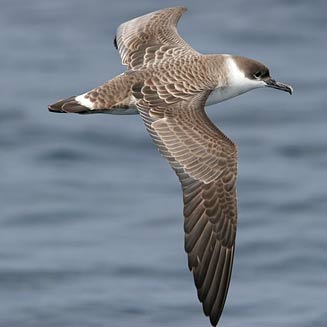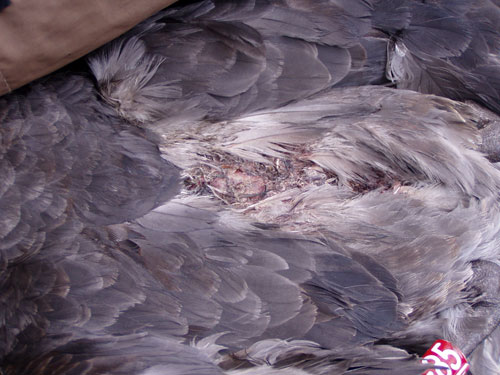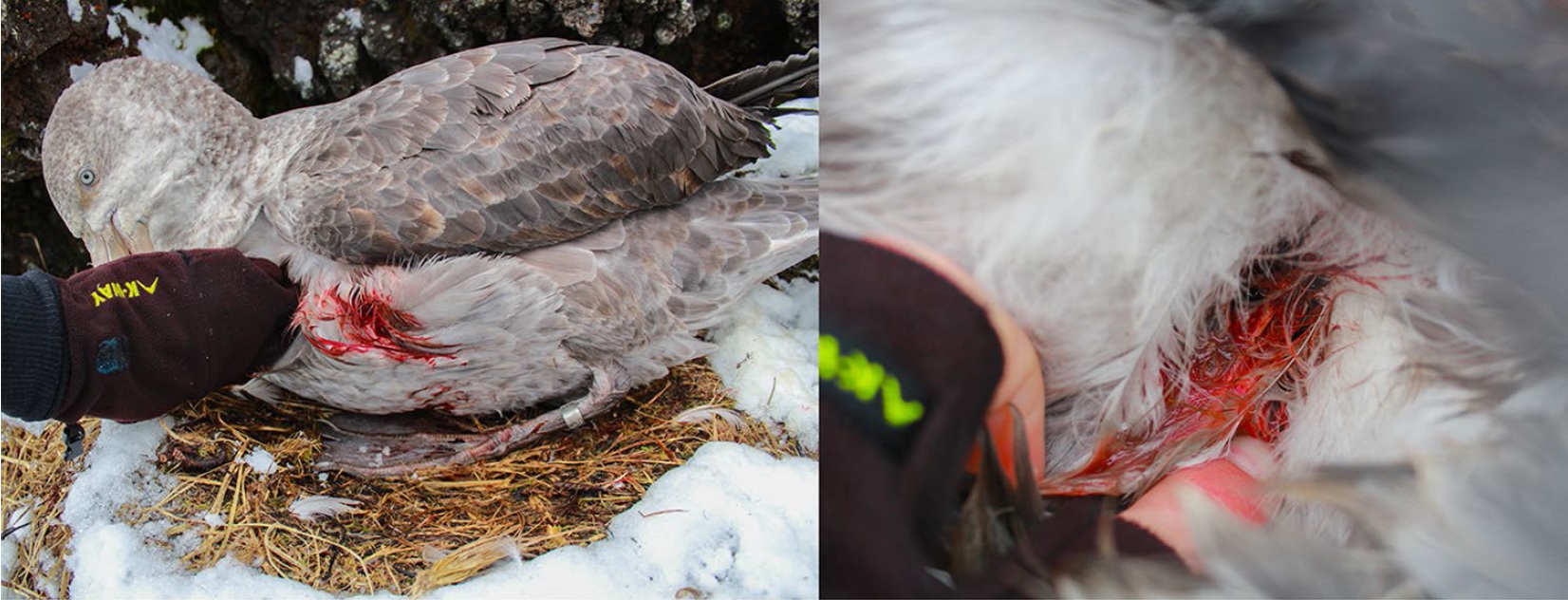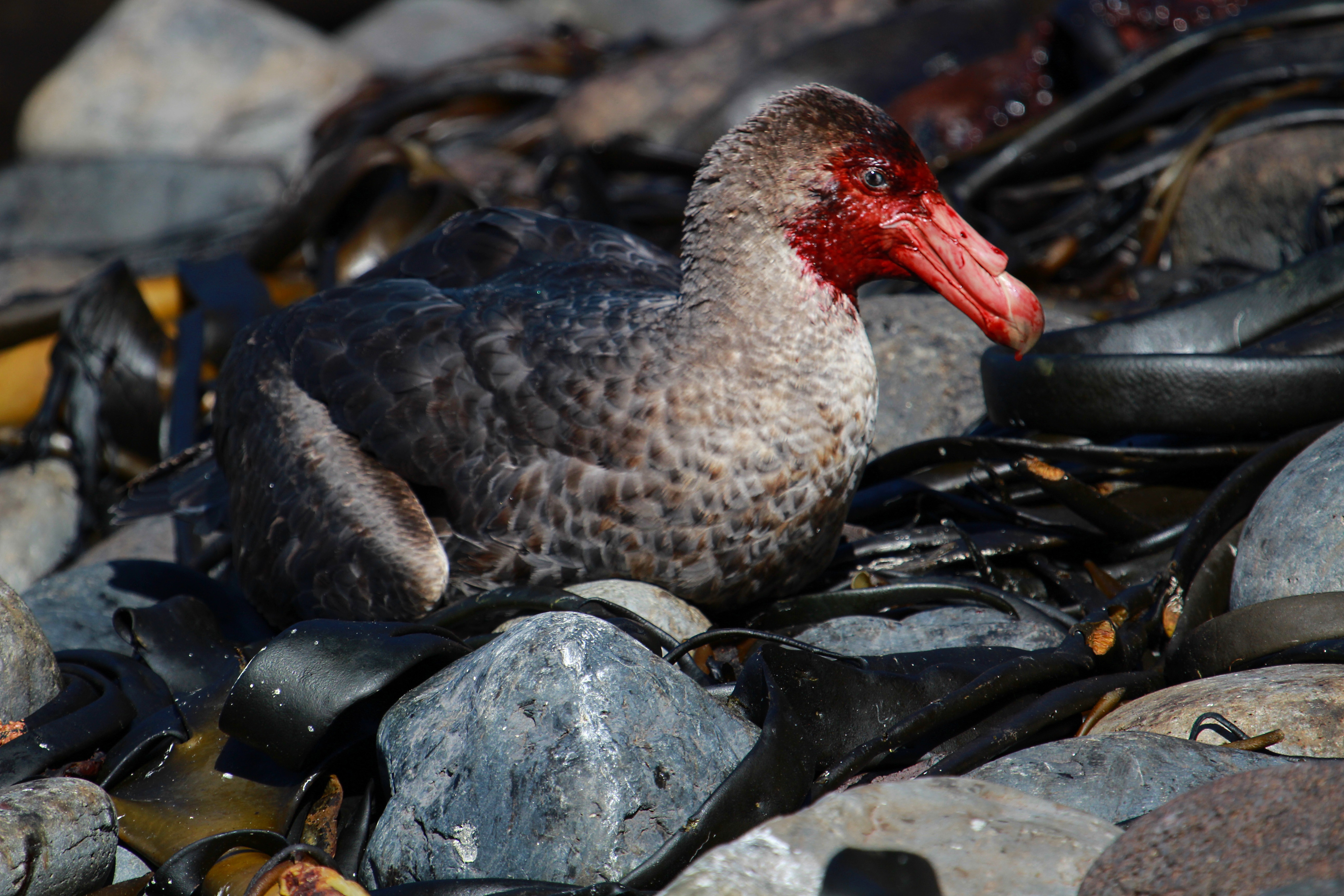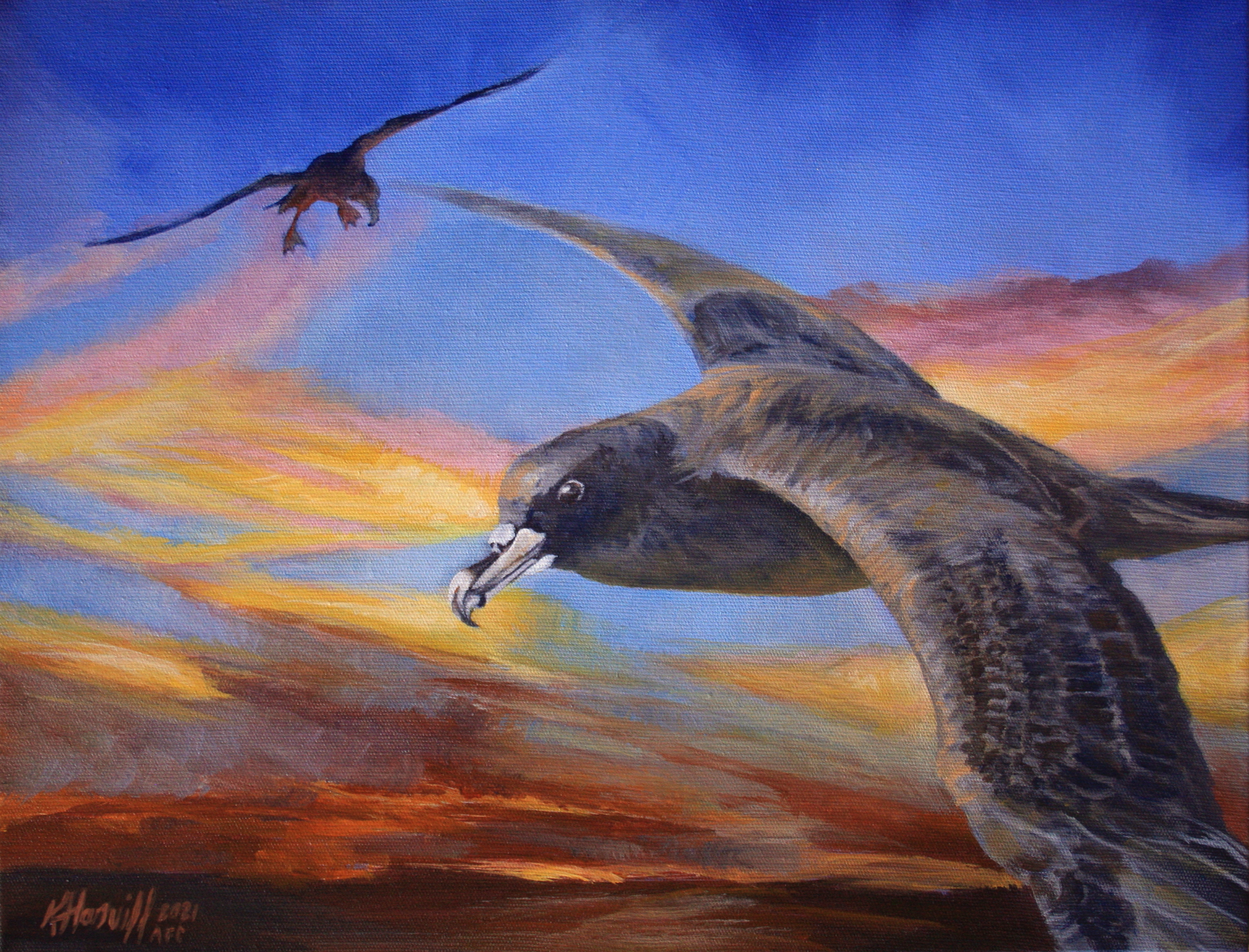
"Seabird Sunset“”, White-chinned Petrels by ABUN co-founder Kitty Harvill for ACAP, acrylics, 27 x3 5 cm; after a photograph by Dimas Gianuca
Note: The illustrated Species Summaries have been written to help inform the general public, including school learners, of the biology and conservation needs of the 31 ACAP-listed species. They serve to complement the more detailed and referenced ACAP Species Assessments. To date, summaries for the 22 species of albatrosses have been produced in in all three ACAP official languages, English, French and Spanish.
Texts have also been prepared for the nine ACAP-listed petrels and shearwaters in English, but as yet have not been translated into French and Spanish. As an interim service, the illustrated English texts are being posted to ACAP Latest News, continuing here with the White-chinned Petrel Procellaria aequinoctialis.
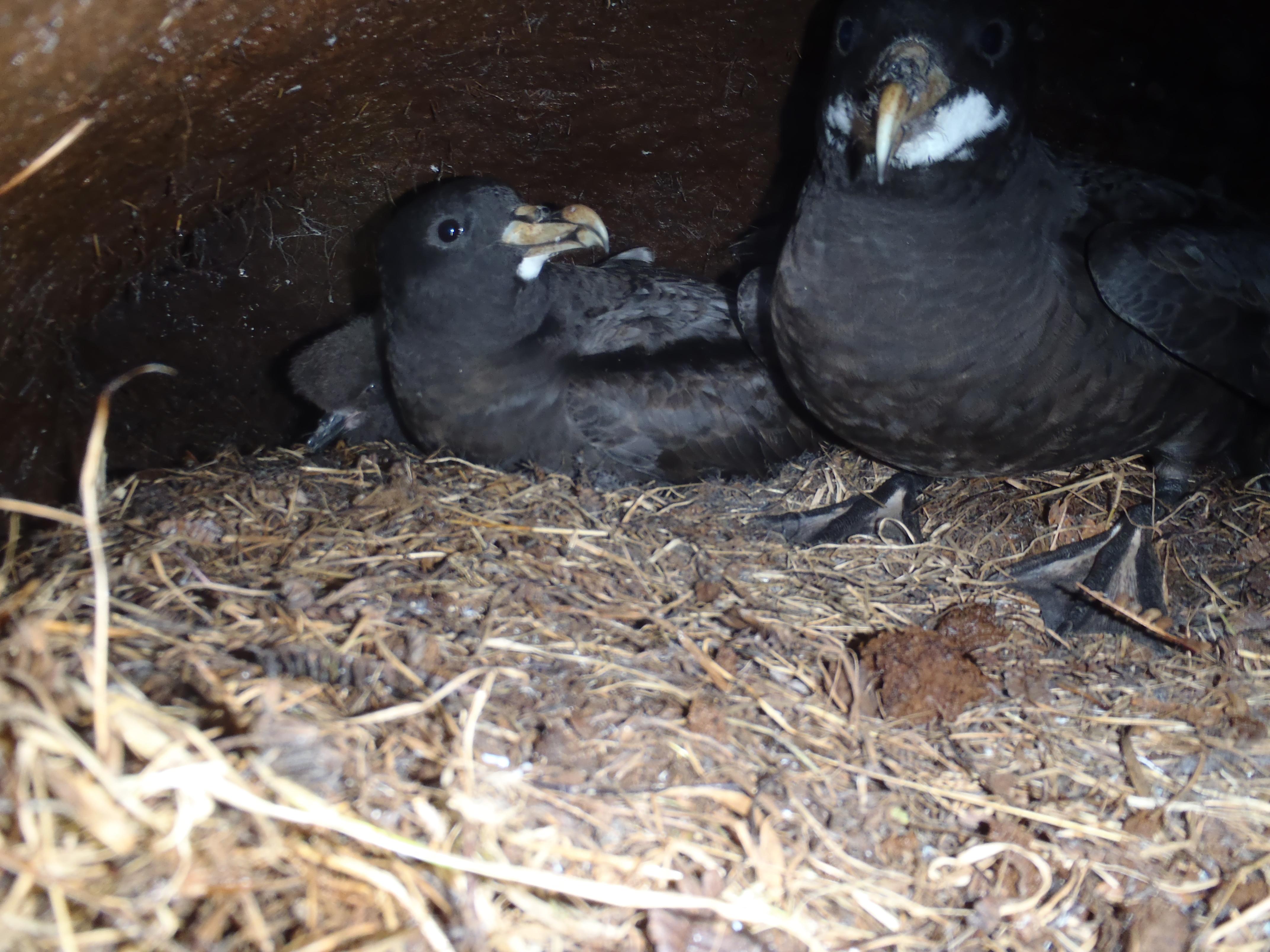
A White-chinned Petrel pair in its burrow on Marion Island; photograph by Ben Dilley
The White-chinned Petrel is one of five medium-to-large petrels within the genus Procellaria, along with the Black, Grey, Spectacled and Westland. Among all the petrels and shearwaters in the tubenose family Procellariidae, the ‘White-chin’ is one of the largest to breed in burrows. The species is dark brown to black, save for a white chin of varying size that is not always readily visible in flight. The white chin is a diagnostic feature separating the species from the otherwise similar looking Black and Westland Petrels. The legs and feet are black; the bill is pale yellow with a black saddle.
‘White-chins’ have a wide range in the Southern Ocean breeding on sub-Antarctic islands. In the southern Indian Ocean birds breed in the Prince Edward Islands (South Africa), Crozets and Kerguelen (France), on islands south of New Zealand (Antipodes, Auckland, Campbell) and in disputed territories* in the South Atlantic (South Georgia/Islas Georgias del Sur) and in small numbers in the Falkland Islands/Islas Malvinas. At sea it ranges widely over the whole Southern Ocean south to the Antarctic pack ice and north to the coasts of southern Africa and southern South America. The global population has been estimated at around 1.2 million breeding pairs representing three million adults, with the largest numbers (>100 000 pairs each) breeding on South Georgia/Islas Georgias del Sur, followed by Kerguelen and Auckland Islands. At localities where trends exist populations have decreased by a quarter to a third over two decades or so, corroborated by similar declines in at-sea counts.
White-chinned Petrels breed colonially in burrows dug on vegetated peat slopes, usually with small ponds at their entrances. As for all other tubenose seabirds they lay a single white egg. Breeding takes place in the austral summer. Diet consists of fish, crustaceans and squid obtained by surface seizing and diving to a depth of 15 m, often feeding at night. Scavenging behind fishing vessels is common, putting the bird at high risk to longline hooks and trawl warp collisions.
Because of population declines and fishery mortality the species has a global threat category of Vulnerable, despite its overall large population. Introduced mammals, including predatory cats and rodents, have been removed from most breeding islands where they occurred, leading to improved breeding success where studied, but not from all. Introduced mammals require removal from French sub-Antarctic islands and from Auckland Island. More widespread adoption of mitigation measures (such as deploying bird scaring lines) is required on fishing vessels within the species’ wide range in both national and international waters. The White-chinned Petrel is listed both within the Albatross and Petrel Agreement (ACAP) and the Convention on Migratory Species on Appendix II. Nearly all breeding islands are national nature reserves with management plans or equivalents restricting landings by permit only. Several are World Heritage Natural Sites and/or Ramsar Wetlands of International Importance. Most are surrounded by Marine Protected Areas of varying sizes.
Sources:
ACAP 2012. White-chinned Petrel Procellaria aequinoctialis.
Bell, E.A. 2017. White-chinned petrel. In: Miskelly, C.M. (Ed.) New Zealand Birds Online.
BirdLife International 2021. Species factsheet: Procellaria aequinoctialis
John Cooper, ACAP Information Officer, 16 March 2022
*A dispute exists between the Governments of Argentina and the United Kingdom of Great Britain and Northern Ireland concerning sovereignty over the Falkland Islands (Islas Malvinas), South Georgia and the South Sandwich Islands (Islas Georgias del Sur y Islas Sandwich del Sur) and the surrounding maritime areas.




 English
English  Français
Français  Español
Español 